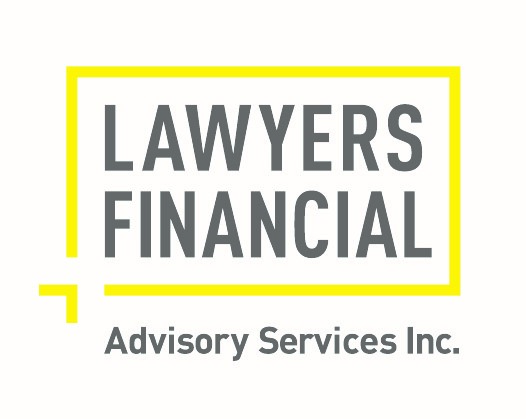ALERT: The Canada Post strike may impact your ability to pay by cheque—and our ability to deliver invoices and other documents. Pay premiums directly from your bank using the payee “LAWYERS FINANCIAL” or switch to a pre-authorized payment plan to make your payments automatic. Call us at 1 (800) 267-2242 to switch to e-Delivery.

There are two things we can all count on: taxes and…something else (we forget). And it seems like there are always new variations in both. Here’s a list of deadlines for the 2024 tax year, a recap of what’s changed, a reminder of capital gains taxes on the horizon (sorry!), and tips to help you manage your windfall if you’re one of 19 million Canadians who might get a refund this tax season.
For a list of every tax and benefit that changed in 2024, visit the Canada Revenue Agency (CRA) website.
Your tax filing deadlines
| How are you filing? | Filing deadline | Payment deadline |
| If you're filing as an individual | April 30, 2025 | April 30, 2025 |
| If you, your spouse or common-law partner are self-employed | June 15, 2025* | April 30, 2025 |
| If you're filing on behalf of your corporation |
Six months after the end of the corporation’s tax year |
Generally, corporations have to pay their taxes in instalments, either monthly or quarterly. |
*June 15 is a Sunday this year. If you or your spouse/common-law partner are self-employed, your return will be considered filed on time if the CRA receives it, or it is postmarked, on or before Monday, June 16, 2025.
Tax brackets have shifted
Tax brackets have shifted This spells savings for most Canadians: the CRA has boosted 2024 tax brackets to account for inflation and rising living costs.
Here are the federal tax bracket rates for individuals in 2024:
- 15% on the first $57,375 of taxable income, plus
- 20.5% on taxable income between $57,375 and $114,750, plus
- 26% on taxable income between $114,750 and $177,882, plus
- 29% on taxable income between $177,882 and $253,414, plus
- 33% on any taxable income over $253,414
Penalties for unpaid taxes have increased
The penalty for filing late hasn’t changed. Just like last year, the 2024 penalty for filing late is 5% of your balance owing, plus an additional 1% for each full month past the filing due date—to a maximum of 12 months.
New this year are steeper penalties for previous missed deadlines. If the CRA charged you a late filing penalty for 2021, 2022, or 2023 and made a formal demand for a return that you still haven’t filed, simply file it. Your late filing penalty for 2024 will be 10% of your balance owing. And you’ll be charged an additional 2% for each full month that you file after the due date—to a maximum of 20 months. Life is stressful enough. Don’t let little brown envelopes add extra anxiety.
Coming next January: Of cottages and capital gains
On January 31, 2025, the Federal Minister of Finance announced a deferral of changes to the capital gains inclusion rate on gains exceeding $250,000. (Today, only 50% of capital gains are taxable. Next year, that will increase to 66.67%). The initial announcement was big news—especially for anyone who owns a vacation home, since higher capital gains taxes were going to make it more expensive to inherit a vacation home—and therefore that much more difficult to keep that cabin/cottage/chalet in the family. This deferral gives Canadians more time to plan their estates (hint, hint: permanent life insurance), or sell before January 1, 2026 to benefit from current rates.
Your 2024 tax year checklist
Whether you do it yourself or work with a team of experts, here’s a list of everything you should double-check before filing your 2024 taxes.
About you
Here are a few things you’ll need to have on hand.
☐ Last year’s tax return and CRA Notice of Assessment for you, your spouse or common law partner, and any dependents
☐ Records of any tax instalments you paid throughout the year
☐ A list of assets held outside of Canada
☐ Charitable donation receipts
☐ Political contribution receipts
☐ Medical receipts for any treatments you had in 2024
TIP: You can access your CRA Notice of Assessment online by creating a MyCRA account and using the mobile app to view your documents.
About your family
Parents can use tax credits to claim many of the substantial (and growing) costs of raising a family. Be sure to account for everyone and everything.
☐ Tuition slips (T2202A) for yourself or for a child
☐ Childcare expense receipts
☐ Medical receipts for your family's 2022 treatments
About Your income
Do you have income from more than one source? Give yourself enough time to track down all the details.
☐ Employment income (T4)
☐ Employee profit sharing (T4PS)
☐ Employment Insurance slip (T4E)
☐ Pension, retirement and annuities income slips (T4A)
☐ Registered plan income (T4RSP & T4RIF)
☐ Dividends from your incorporated practice
☐ Bonuses
☐ Old Age Security (T4A-OAS)
☐ Canada Pension Plan slips (T4A [P])
About Your investments
If your investments are consolidated with one investment firm or advisor, you should receive all of this information automatically. Ask your advisor if this information is available online.
☐ RRSP contribution receipts
☐ TFSA contribution amount (available through MyCRA)
☐ Investment income tax slips (T5)
☐ Income from trusts (T3)
☐ Income from partnerships (T5013)
☐ Capital gains and losses summary (T5008 or Statement of Securities Transactions)
☐ Receipts for investment advice
☐ Receipts for interest paid on investment loans
Considerations for all lawyers
As a lawyer, you may be entitled to the following deductions related to personal and professional expenses. If in doubt, consult a tax expert or ask your firm’s payroll provider for advice.
☐ Professional and union dues
☐ Moving expenses if you relocated for work in 2024
☐ Home office expenses. If you’re claiming your actual expenses (the money you spent on a computer, printer, office supplies, etc.), you’ll need receipts and a Form T2200S / Form T2200 signed by your employer.
☐ Mileage (tracked in a logbook)
Make the most of your refund
19 million Canadians received a tax refund last year, according to the CRA, with the average payback amounting to approximately $2,300. How will you invest your refund, if you get one? (Notice we didn’t say “spend”?). Read the related blog, “Don’t fear the tax plan,” for five ideas to make the most of your refund and start planning for next year.
We can help
Tax planning is the one component that runs through every part of your overall financial plan—whether you’re paying down debt, saving for retirement, or planning to leave a legacy. We can’t file your taxes, but we can help with your tax strategy. Connect with a financial planner and ask how.
Book a financial planning meeting now


